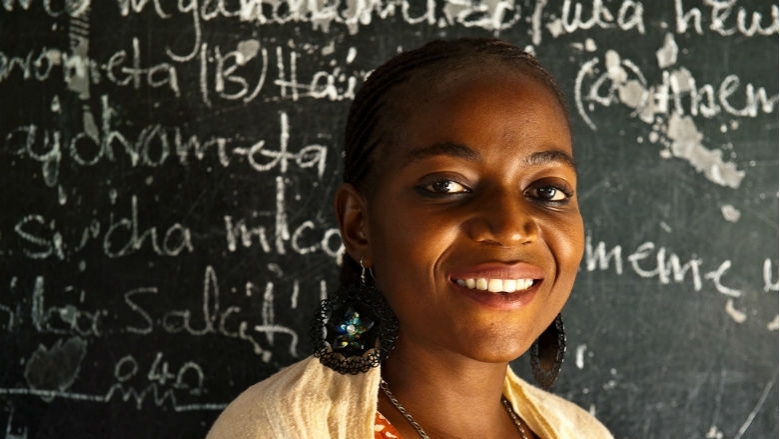Challenge
Tanzania’s aim is to reach middle income status in 2025. It initiated a program based on seven critical sectors (energy, agriculture, water, education, transport, resource mobilization, and business environment) to advance the implementation of its five-year Development Plan (2011-2016) and MDGs.
Learning outcomes at the time of appraisal in April 2014 were low and declining. The 2012-2013 Annual Assessment Report for Tanzania by Uwezo reported poor basic literacy and numeracy skills at primary and secondary levels. Moreover, the baseline for the 3R (Reading, Writing and Arithmetic) assessment for Grade 2 students showed very low results.
In addition, high rates of class-level absenteeism and time-on-task are major problems. High regional inequities in teacher allocations result in unevenness in student-teacher ratios across districts, with averages ranging from as low as 30:1 for primary schools in some districts to 80:1 in other districts.
Approach
This was the first time World Bank used its Program for Results (PforR) approach in Tanzania, unique because of its focus on results rather than inputs. Disbursement of funds for the program was linked to delivery of process, output, and outcome-level results which the government expects to achieve as it delivers the overall program. These indicators encompassed school performance, early grade student assessments, targeted support to lagging students, recognition incentives for teachers, and ensuring that funds reach schools in a timely manner.
The government of Tanzania already had a strong national program in place with strong implementation commitment from the highest political levels. The project’s interventions were formulated to align with the government’s agenda, and its approach strengthened the education system by improving the effectiveness of its existing structures. Its incentives were designed to increase motivation, enhance performance transparency, provide support where it was needed the most, and improve teacher’s conditions.
Results
- All primary and secondary schools are receiving monthly capitation grants in a timely manner since December 2015. The amount of the grant is linked to the enrolment in schools.
- There are 10.7 million beneficiaries, of which 50 percent are female.
- The Student Teacher Enrichment Program (STEP) has delivered enrichment classes in 5,459 primary schools and 1,139 secondary schools, exceeding its target The STEP’s aim is to build teacher capacity to develop a culture of identifying and enriching low performing students and providing additional support.
- 16,333 schools are receiving school improvement toolkits (exceeding its target of 15,000). The toolkits contain practical guidelines and training to school hears about strengthening school management.
- 33, 502 teachers have been trained in 3R training program. It includes modules on how to improve continuous assessments of students in reading, writing and mathematics. The same subjects are assessed to determine knowledge of Grade 2 students in a nationally representative sample of schools
Bank Group Contribution
IDA, the World Bank’s fund for the poorest countries, is providing $122 million equivalent in credit. To date, the World Bank has disbursed 39 percent of the funds against achievement of disbursement-linked indicators (DLRs).
Partners
The EPforR program is expected to cost $416 million over a four-year period (2014-2018). The PforR is supported by the $252 million equivalent in financing from DFID (£60 million or about $100) and SIDA ($30 million).
Implementing government bodies from Tanzania include: the Ministry of Education, Science, Technology and Vocational training and the President’s Office of Regional Administration and Local Government (PO-RALG)
Moving Forward
Going forward, challenges remain in classroom capacity, teaching learning materials and schools to meet minimum standards while managing rapid expansion of the sector. The government has expressed interest to expand the focus of the EPforR program, through additional financing, to address some of these challenges.
Beneficiaries
